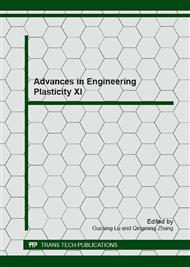p.461
p.465
p.469
p.473
p.477
p.481
p.485
p.489
p.493
Design Issues of a Kolsky Tension Bar
Abstract:
In general, materials exhibit an increase of strength when loaded at high strain rates, which should be taken into account when dealing with structural impact. Kolsky developed an equipment operating based on elastic wave propagation capable of submitting a material sample to high strain rates. This paper presents some design features of such a tensile wave machine, including mechanical and electronic design issues, which may be helpful in a design phase.
Info:
Periodical:
Pages:
477-480
Citation:
Online since:
January 2013
Authors:
Price:
Сopyright:
© 2013 Trans Tech Publications Ltd. All Rights Reserved
Share:
Citation:


